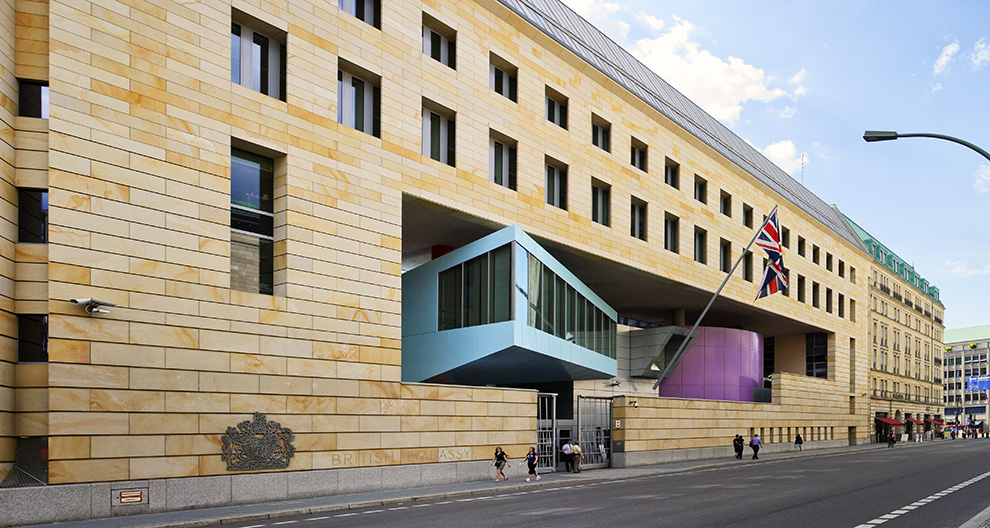The Pivotal Role of Architecture in Epic Films

principles of design in art
Introduction
Historical epic films have always held a special place in cinematic lore. These grand tales, often set against the backdrop of bygone eras, transport audiences to different periods, letting them tread the sands of ancient Egypt or stroll through medieval European courtyards. But beyond the lavish costumes and dramatic narratives, it’s architecture that plays an unsung yet pivotal role in crafting these immersive experiences. Let’s delve into the role of architectural design in sculpting the worlds of historical epics.
Also Read:- 10 Pioneering Structures of Post Modernism in Architecture
Filmmaking and architecture are interconnected fields, drawing parallels from one another in both visual screenings, as well as practical applications. This is particularly true when exploring certain themes, such as Futurism, Science Fiction, Dystopias, and Utopias, but also relevant to the context of this essay in applications in Historical Epics.
Setting the Stage: Architecture as a Narrative Tool
- Historical Authenticity: The meticulous reconstruction of ancient buildings, cities, or entire civilizations lends authenticity to the narrative. Think of the sprawling arenas in “Gladiator” or the grandeur of the Titanic in James Cameron’s eponymous film. These structures ground the story in a tangible reality.
- Socio-Cultural Context: Architecture, with its styles and intricacies, reveals a lot about the socio-cultural ethos of the era. A Gothic castle speaks to the sensibilities of medieval Europe, while the ornate palaces of “Mughal-e-Azam” illuminate the grandeur of Indian royalty.
- Mood and Atmosphere: The architecture in a scene can evoke emotions and set the tone. Dark, looming fortresses can create a sense of foreboding, while sunlit courtyards can convey peace and prosperity.
Historical Epic Films are often associated with major historical or sociocultural events, but also, quite notably, “it is associated above all with films set in biblical times or the ancient world” (Encyclopedia). This genre has been relevant for decades, transporting viewers to a renowned past, often accessible only through ancient documents or texts. And so, while often, the theme, event, or characters are intensely relevant to the film, the architecture, set design, and space creation of these movies must not be undermined. Amplifying the original narrative at play, the architecture of historical epics highlights the film’s appeal and accessibility. It is important to note that Historical Epic films may be considered overly exaggerated, excessively opulent, or even fantastical to a certain degree- but not without reason: “It was particularly prevalent in the 1950s and 1960s when epics of all kinds were produced to counter a decline in cinema attendance” (Encylopedia). And so, in creating a unique visual experience through architectural storytelling, the role of the historical epic is bi-fold: “The hypothetical spaces represent people’s aspirations and their deepest fears for architecture” (Aziz et al., 2022, 102).
Before discussing specific movies, an overall analysis must be considered. When analysing the architecture of movies, it is relevant to note that this term encompasses an overall consideration for the set design, space creation, use of colours, and props, as well as many other overall interconnected themes: “…the cinematic space architecture of interior design is a graphic exploration of the architectural space in the movie, which provides a new perspective for the relationship between the architecture and the movie” (Aziz et al., 2022, 102). And so a unique analysis of each movie will be provided, in which different spatial, architectural, and visual characteristics will be considered as part of an interconnected whole.
Gladiator (2000)
One of the most intensely analysed historical epic films is that of Ridley Scott’s “Gladiator” (2000). Set in Ancient Rome, the film visually highlights one of the most renowned historical cultures and architectural styles. A building exceptionally relevant and a central focus to this movie is the Colosseum, often referred to as the “symbol of Rome” (Rome.Net), which was a “giant amphitheatre built in Rome under the Flavian emperors” (Rome.Net), and a structure which housed events, executions, exhibitions, and, as reflected in the currently discussed film, gladiator fights.
The Colosseum was a structure that emphasised hierarchy and reflected the social conditions and dynamics of Roman society: the seating arrangement over the four stories was based on social rank and relevance within society, with women, and those of lower castes, placed at the top, until a seated hierarchy rose with the emperor and his associates at the bottom. The film recreates the iconic amphitheater, complete with its towering arches and grand seating arrangements, allowing viewers to witness the brutal spectacle in all its historical glory.
And so, a reflection of this hierarchy is further highlighted in the spatial and architectural hierarchy in the set design, as seen through numerous examples most relevant to the character of Maximus. Maximus surveys his troops from higher grounds, although he is still often looked down upon when in the Colosseum, and finally, when he passes, he “is carried above the shoulders of his comrades. Death is Maximus’ elevation” (Cresswell, 4). Once again, this emphasis on ascending and descending may be considered a continuous continuation of the actual architecture of the Colosseum.
It is also worth noting that the cinematography of Gladiator is further amplified through the use and application of colours, notably in grey tones, entirely warping the view and architecture of the city of Rome- this technique is also to be cross-referenced when exploring other films, such as “Schindler’s List”. Another relevant theme central to “Gladiator” is the relationship between urban and rural areas, also further reflected in other movies, such as “The Last Samurai”. This is particularly noted when addressing the more large-scale set design of the film, which includes Roman palaces, bustling markets, the raw brutality of the massive gladiator arenas, and the rustic and humble architecture of the Germanic villages.
The Last Samurai (2003)
Edward Zwick’s “The Last Samurai” (2003) is another movie central to this analysis. Set during the Meiji Restoration Era, a period of rapid modernisation in Japan, the movie is a dynamic reflection of both Japanese society and the region’s architecture and design- the latter being particularly highlighted throughout the film.
The featuring of traditional Japanese architecture is showcased in various settings throughout the film and, reflects numerous subsections of society, as reflected through the samurai village and the Emperor’s palace. As highlighted in “Gladiator”, the difference between rural and urban is also a relevant theme in this movie: the samurai village is serene and picturesque, in clear distinction to the extravagance of the Emperor’s Palace in Tokyo. The samurai village is intimately captured in its architectural style, which reflects simplicity, harmony, and a deep reverence for tradition. Wooden structures are combined with translucent shoji screens (Architectural Digest) and sloping roofs, in harmonious contrast with the landscape in the background. Excessive attention to detail is central to the set design- as well as in the costume design in the movie- in notable testament to the craftsmanship of traditional Japanese architecture.
As the movie progresses, it highlights the rapid modernisation of Japan during the Meiji Restoration period, which brings about a stark contrast to the initially portrayed buildings of the samurai village. Modernisation is portrayed through a notable change in architecture, which begins to lean more towards Western-style buildings rather than vernacular and local Japanese architecture; brick and stone are used rather than wood, and a new, foreign emphasis on Modernism through symmetry and straight lines becomes clear. This dichotomy in architecture aims to be a reflection of a central theme in the movie, which is the clash between tradition and modernity.
Schindler’s List (1994)
As previously explored in “Gladiator”, it has been established that colour plays a central theme in both the visual narrative of the movie itself as well as the processing of the architecture being showcased. Steven Spielberg’s “Schindler’s List” (1994) is one such movie characterised by its colour compositions. The film is primarily shot in monochromatic black and white, in reflection of the raw brutality of its subject matter. The architectural elements of the space, in addition to its bleak color selection, amplify the emotional impact of the film.
The film has exceptionally accurate references to concentration camps, amplified through the Foucaultian setting captured through the living conditions, cramped barracks, wire fences, guard towers, and watchful searchlights. Additionally, architectural contrast in “Schindler’s List” plays a key role in the film: The extravagant architecture of Amon Goeth’s villa in Plaszow stands in extreme contrast to the conditions of the concentration camp nearby. Additionally, the depiction of the Kraków Ghetto showcases the architectural degradation of Jewish neighbourhoods under Nazi rule. The film’s architecture and set design is one that directly impacts the proposed visual narrative, heightening its visceral emotional impact.
And so, it is important to conclude that the interconnectedness between film and architecture is difficult to summarise in a few short words succinctly. Particularly relevant to the context of this essay is the role social hierarchies play and how architecture may accurately reflect and portray this. Thus, to end on a general note, there are numerous interrelated topics relevant to note, such as the accessibility of cinema, the importance of cultural understanding, the role media plays in the spread of mainstream culture, the role and relevance of historical accuracy, as well as many others which allow for the world of cinema to be multidimensional, and multidisciplinary- as is architecture.







